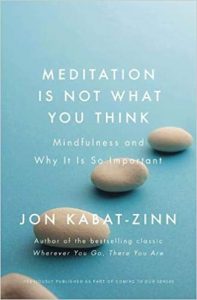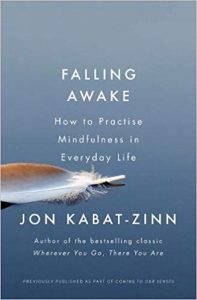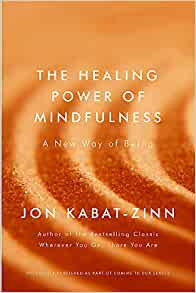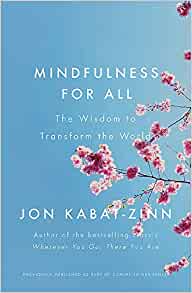Coming To Our Senses Series
by Jon Kabat-Zinn
Book 1 – Meditation Is Not What You Think

Meditation Is Not What You Think addresses the essence of mindfulness, what it is, where it comes from, and why it is so important. You can think of this book as the what and the why of mindfulness, both in terms of your personal life, and in terms of the planet and the threats it is facing, all stemming from human activity, and in particular, the human mind when it doesn’t know itself.
Book 2 – Falling Awake

Falling Awake is about cultivating mindfulness as a practice and as a way of being in your own life. You could think of it as the how of mindfulness, what it takes to cultivate it in your own life, as a love affair with what might be most important to you, in ways that might be deeply satisfying, meaningful, and ultimately, liberating. It includes instructions for literally and metaphorically coming to your senses in both formal practice and in everyday living. It provides detailed instructions and guidance through the practices of the body scan (lying down meditation), sitting meditations, standing meditations, mindful hatha yoga, walking meditation, and utilizing your sense doors to learn how to inhabit the domain of your own moment to moment awareness, fully embodied, and paradoxically, outside of time, both during formal meditation practice, and in everyday living, which is the real meditation practice when all is said and done.
Book 3 – The Healing Power of Mindfulness

The Healing Power of Mindfulness is about the science of mindfulness and what it is known about its potential for handling stress, pain, and illness more effectively, and ultimately, for healing—for coming to terms with things as they are in ways that can be life affirming and transformative, and take us beyond the confines of our own habitual self-centeredness, revealing a boundless spaciousness within the heart of awareness itself that recognizes and values the deep interconnectedness of the world and gives us new ways of being and acting that are profoundly freeing and loving. You could think of this book as elaborating the promise of mindfulness, both inwardly and outwardly. That promise is different for each one of us, and the only way to experience it is through throwing yourself into the practice wholeheartedly, as so many scores of thousands of people have done through the vehicle of MBSR (mindfulness-based stress reduction) and other mindfulness-based programs in the domains of medicine, health care, psychology, and public health.
Book 4 – Mindfulness For All

Mindfulness For All: The Wisdom to Transform the World addresses how the practice of mindfulness is applicable and relevant not just to our own individual bodies and wellbeing, but to the body politic and the future of humanity. It addresses the potential realization of mindfulness through our cultivation of everything that has come before in the earlier volumes. Part I emphasizes that we need to keep in mind that we are simultaneously practicing mindfulness not just as individuals but also as members of the human species, Homo Sapiens Sapiens. This means that we need to adopt an evolutionary perspective on what might be possible if we are to find authentic ways to wake up to our own true nature as human beings (as the species that is aware and aware that it is aware) and face the ever-increasing disruptions, challenges, and threats that our precocity and creativity, along with our tendencies toward mindlessness and self-centeredness, greed and delusion, have created, along with all the beauty, mystery, and wonder. This evolutionary perspective on the role of mindfulness in healing and transforming the body politic is especially relevant as we move into the third decade of the 21st Century. It inevitably and axiomatically includes social justice and environmental justice as outgrowths of the cultivation of mindfulness and a ripening into greater wisdom and compassion, reflected in our laws and in our actions in facing the universal threats that we ourselves have created. Part II brings us full circle, to contemplate the uniquely personal, situated in what we know about the universe and our place in it. It celebrates the poetics of mindfulness, through our personal practice and through its embodied flourishing in the more than human world, the world we will leave to our children and grandchildren.
“For Mindfulness is not mindfulness if it is not lived. And that means embodied. Those of us who undertake it in this way do so as best we can – not as an ideal, but as an ongoing and continually unfolding way of being”
– Jon Kabat-Zinn, Mindfulness for All
